1967 SS 396
1967 SS 396 Interior
See trim codes page for interior colors
The SS 396 was available in six interior trim/seat colors; Medium Bright Blue, Medium Blue, Medium Red, Black, Medium Turquoise, and Medium Gold. An all vinyl bench seat was standard with bucket seats being optional.
Bucket seats did not require a console to be
ordered, the console was still optional under RPO D55. The majority
of buyers ordering bucket seats did opt for the console as well, but
not all; 79,475 Malibu and SS 396 Chevelles were optioned with RPO
A51 Strato-Bucket seats but only 71,482 also checked off on the
console leaving 7,993 Malibu and SS 396 Chevelles with bucket seats
but no console. When bucket seats and no console was ordered on an
SS 396 the various manual transmissions would still be floor shifted
while the Powerglide and Turbo-HydraMatic automatic transmission
would remain column shifted. A Malibu ordered with bucket seat and
no console still has the manual 3-speed transmission column shifted
along with the optional Powerglide automatic transmission. All
manual 4-speed transmissions were floor shifted regardless of
series.
Around the second week of December, 1967 the
console added retainer clips for the seat belt buckles. The manual
transmission console has the seat belt retainer clips on the top of
the console between the storage compartment and the shifter boot
while the automatic console has the seat belt retainer clips on the
side of the console adjacent to the shifter when in the Park
position. Lacking these seat belt retainer clips indicate an early
model year console. The center console was color coordinated with
the interior color, i.e., black for black interior, blue for blue
interior, gold for gold interior, etc.
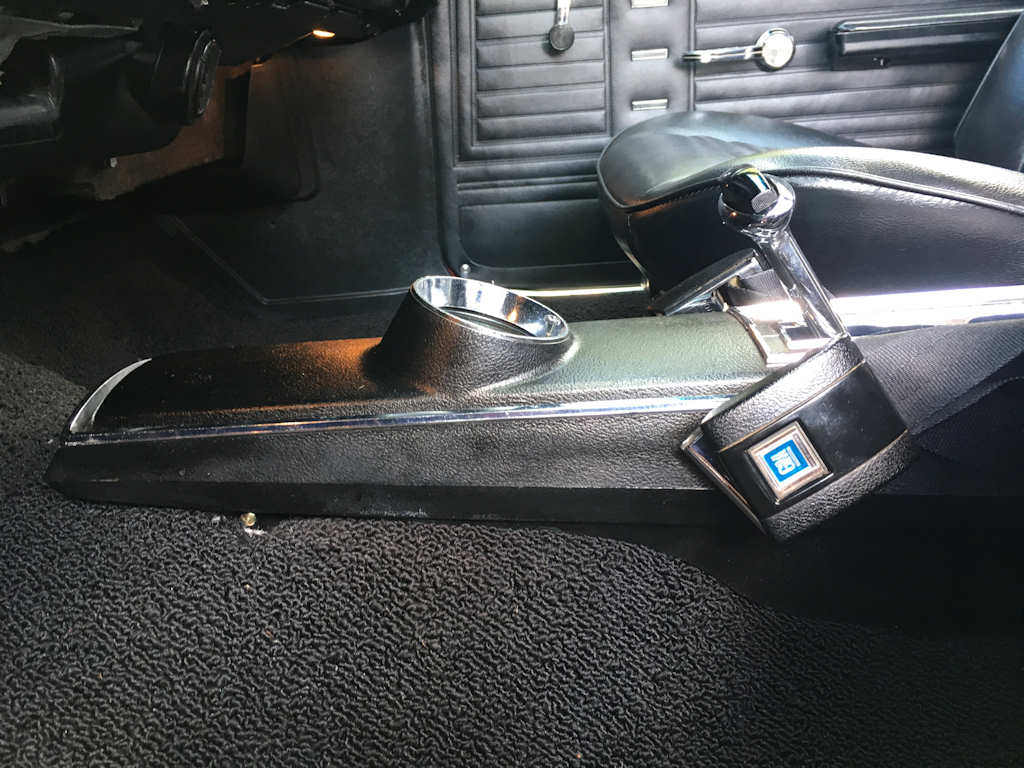
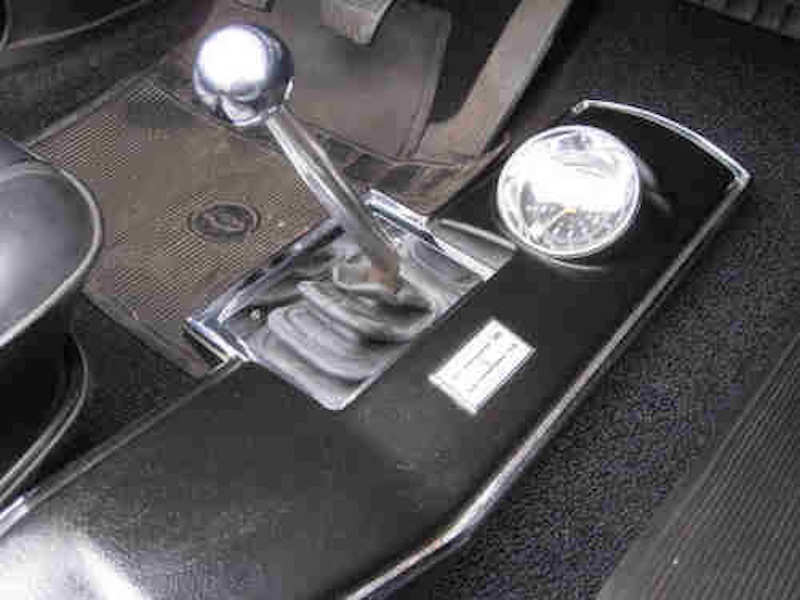
A manual, column-shifted 3-speed transmission was the standard
transmission regardless of series or body style or engine with the
exceptions of the SS 396 series and any sedan pickup with one of the
three optional 396 cubic-inch engines where the standard manual
3-speed transmission shifter was floor mounted with or without a
console.
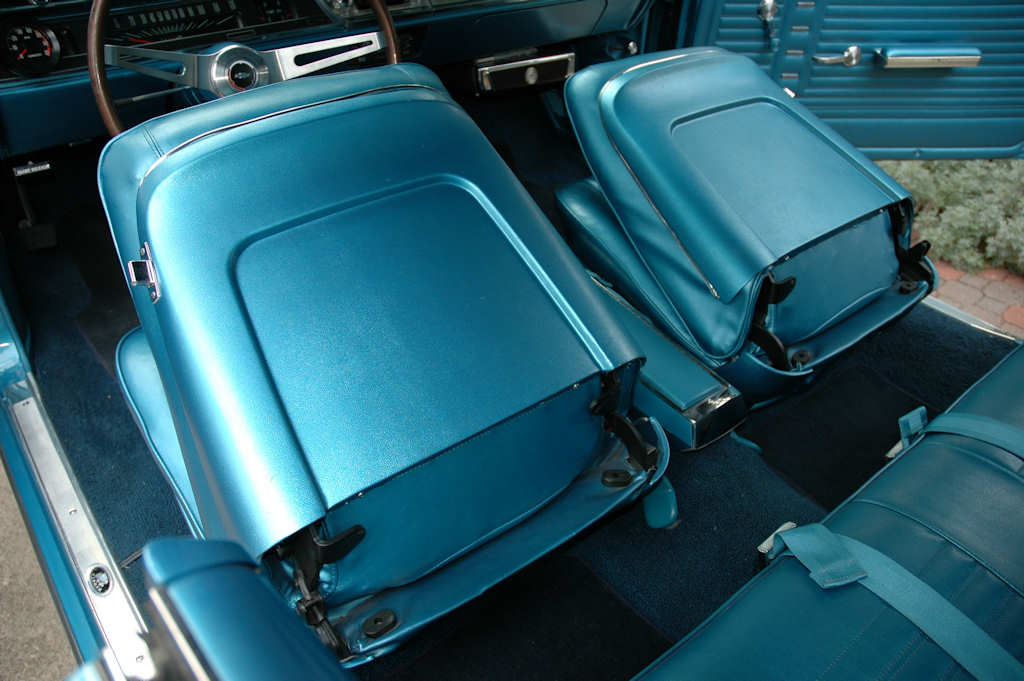
The 1967 model year saw some safety upgrades, one being the front
seat(s) incorporating a locking system to help prevent the seat from
falling forward in the event of a crash. The chrome button on the
side of seat(s) released the lock to allow the seat to fold forward.
Station wagons and 4-door sedans did not have these since the seats
did not need to fold forward for rear seat entry. The plastic
'chrome' trim was only used around the back of the bucket seat and
never on the bottom seat cushion.
Instruments
All Malibu and SS 396 series came standard with an electric clock; the clock was optional in the 300 and 300 Deluxe series. Gauges were optional under RPO U14 with any Malibu sport coupe, convertible, or sedan pickup with any V8 engine and the SS 396. These gauges included electric water temperature, ammeter, mechanical oil pressure, and, a tachometer. The tachometer by itself was optional in the same selection of Chevelles with a V8 engine under RPO U16. The tachometer was located on the top left of the dash under the switch panel. Since it blocked the location of the left turn indicator lamp, this indicator lamp was relocated into the face of the tachometer itself earning it the nickname of “blinker tach.” Two variations of the tachometer were used with an SS 396 depending on the horsepower rating of the engine. Both the L35 325 and L34 350 horsepower engines have a redline at 5400 RPM while the 375 horsepower L78 moved the redline to 6000 RPM. Unlike 1966, all 1967 tachometers have an overall RPM range of 0-7000 RPM.
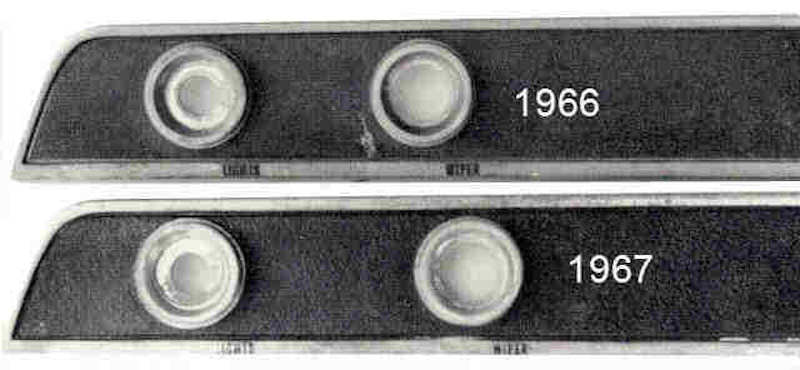
The wiper knob on the 1967 dash is moved approximately 5/8-inch to
the right from the 1966 location to facilitate collapsible steering
column and hazard warning flashers that became standard on the 1967
model year. The 1966 switches measure approximately 2 3/4-inches
from headlamp-to-wiper while the 1967 switches measure approximately
3 3/8-inches.
Both the Malibu and SS 396 were equipped with a clock in the right-most dash pod. When bucket seats and console were ordered the clock moved to the console and, if gauges were not ordered, a blank plate was used and a clear plug was used to cover the clock adjustment stem hole. When the optional gauges were ordered with the Malibu or SS 396 without a console, the clock was moved to the floor on the transmission hump; a rather awkward location.
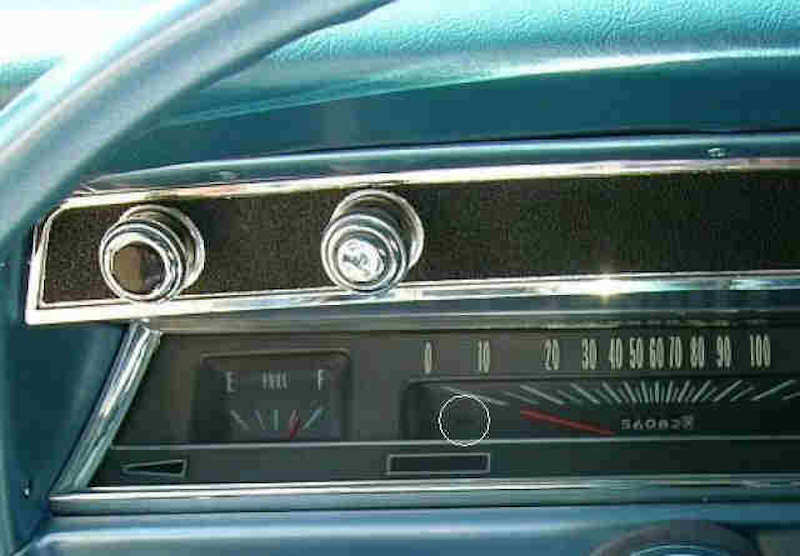
A standard (no gauge option) dash has some minor changes from 1966
even though they look alike at first glance. A fuel gauge with
horizontal sweep occupied the leftmost pod while an electric clock
occupied the rightmost pod. The two warning lamp pods on either side
of the steering column have from left to right, oil pressure warning
lamp, water temperature warning lamp, generator lamp and parking
brake lamp. The high beam headlamp indicator lamp was moved to the
speedometer face just under the “10” on the mph scale.
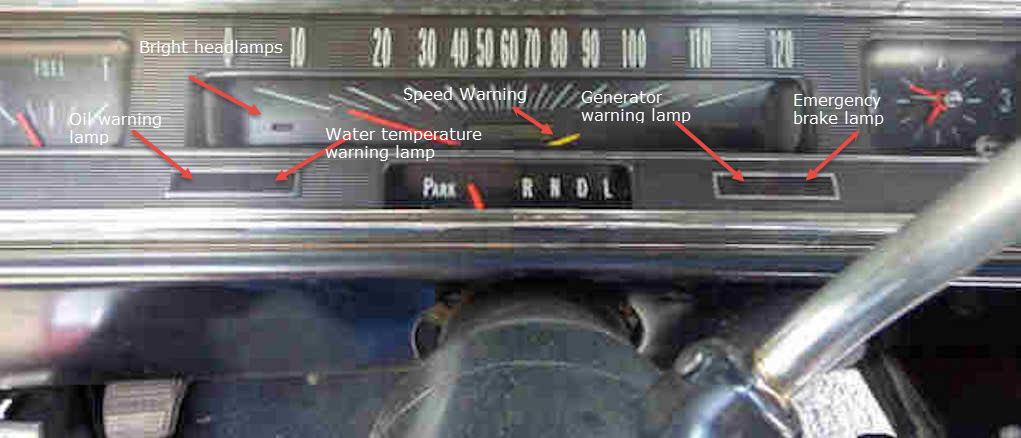
Typical dash cluster lamp layout without Special Instrumentation.
This Chevelle also happens to be optioned with the optional speed
warning system (RPO U15).

Typical dash cluster lamp layout with Special Instrumentation. This
would be correct for any manual transmission or either automatic
transmission with console. An automatic transmission SS 396 without
a console would have the gear indicator between the two lamp pods.
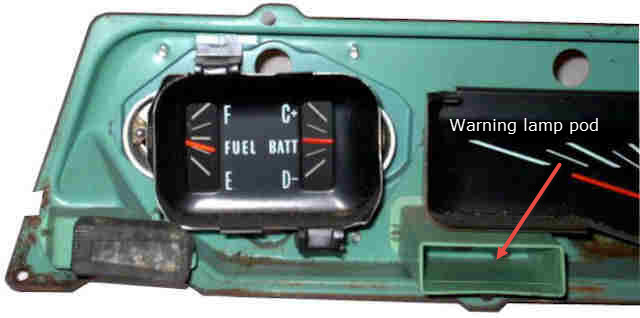
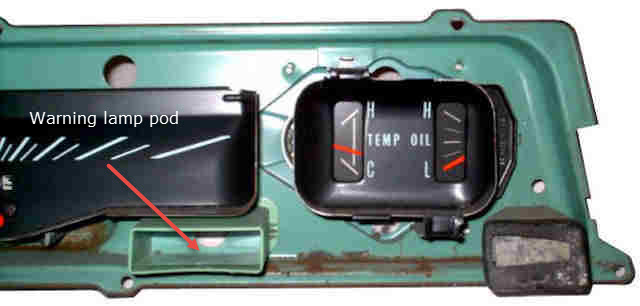
When U14 Special Instrumentation was ordered, a number of changes
had to happen. The leftmost pod now has the fuel gauge and battery
(amp) gauge while the rightmost pod has the water temperature and
oil pressure gauge. All 4 gauges have a vertical sweep. Since the
gauges eliminated the need for several warning lamps, the 2 warning
lamp pods now are used for the high beam headlamp indicator and
parking brake warning lamp. Since the high beam indicator lamp is
now located in the leftmost warning lamp pod, there is no lamp on
the speedometer face itself. As noted earlier the left turn
indicator lamp was covered with the tachometer so the left turn
indicator lamp was moved to the tachometer face. Mandated safety
requirements required a collapsible steering column so, while the
1967 column is similar to the 1966 steering column, they are not
readily interchangeable.
Dash Gauge/Clock Matrix
With the option of Instrument Panel Gauges, many warning lamps and the clock changed position depending whether bucket seats were ordered.
| No gauge option | |
| Lamp/Gauge | Position |
| Bright headlamp lamp | Instrument cluster between '0' and '10' MPH tick marks |
| Fuel level | Left-most dash pod |
| Clock | Right-most dash pod |
| Oil pressure warning lamp | Left-most half of left warming lamp pod |
| Water temperature warning lamp | Right-most half of left warning lamp pod |
| Generator warning lamp | Left-most half of right warning lamp pod |
| Emergency brake lamp | Right-most half of right warning lamp pod |
| Left turn indicator lamp | Bottom left of cluster |
| Right turn indicator lamp | Bottom right of cluster |
| RPO U14 gauge option | |
| Lamp/Gauge | Position |
| Bright headlamp lamp | Left-most lamp pod |
| Fuel level | Left half of left-most gauge pod |
| Battery | Right half of left-most gauge pod |
| Water temperature | Left half of right-most gauge pod |
| Oil pressure | Right half of right-most gauge pod |
| Emergency brake warning lamp | Right-most lamp pod |
| Clock | Console (if ordered) or transmission hump if no console |
| Left turn indicator lamp | On tachometer face |
| Right turn indicator lamp | Bottom right of cluster |
| Tachometer | Top left of instrument cluster below dash strip. |
If only the tachometer (RPO U16) was ordered, only the left turn indicator lamp was affected.
The SS 396 series received a black ‘wrinkle-finish’ strip across the top of the dash where controls for wipers, headlamps, lighter, and ignition switch are. Optional U16 tachometer and/or optional U14 Special Instrumentation was available on all Malibu and SS 396 sport coupes, convertibles, and sedan pickups. The tachometer could be ordered without the four gauges but the four gauges could NOT be ordered without a tachometer.
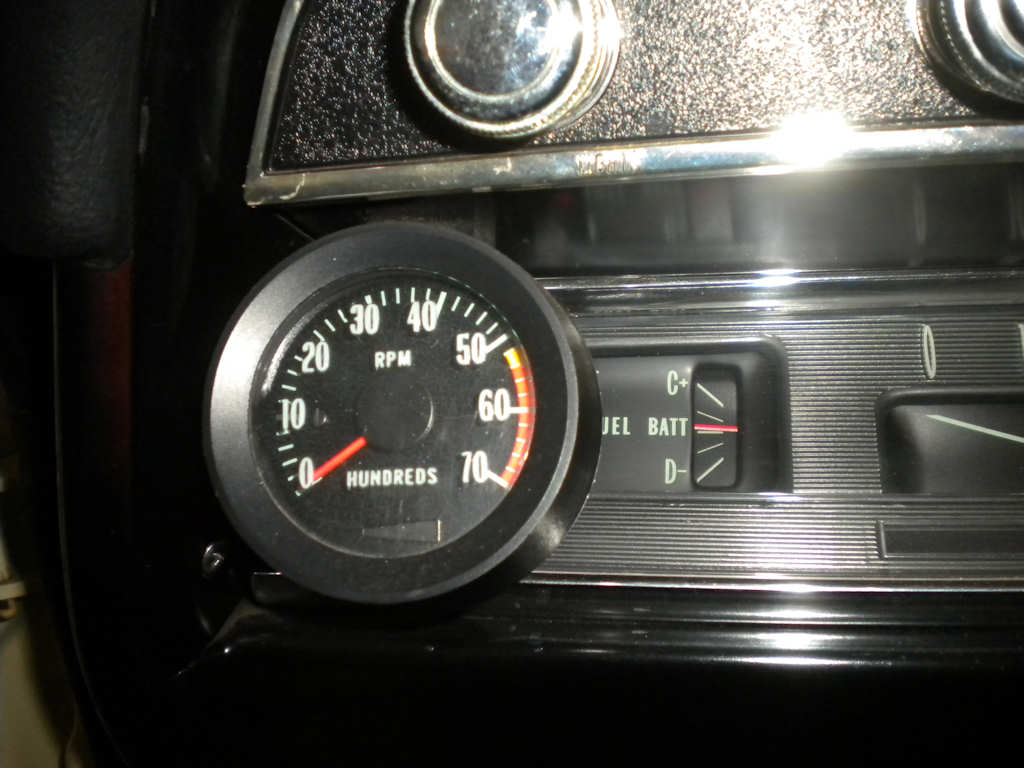
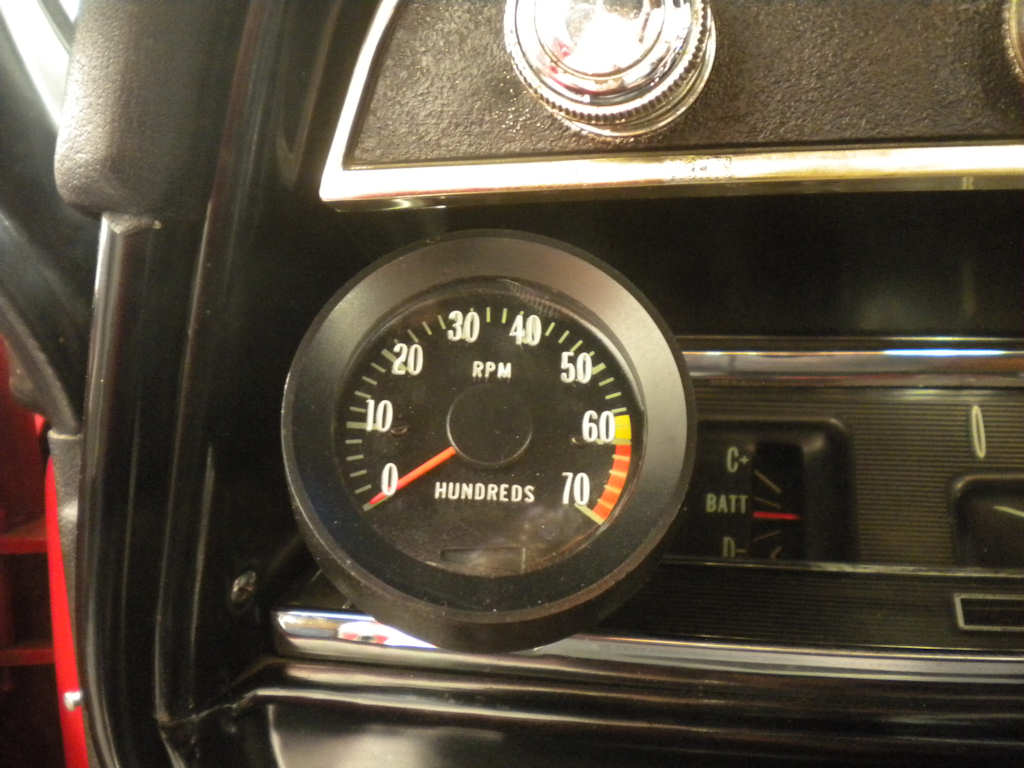
Two tachometers were used depending on which 396 cid engine the
Chevelle had. The top photo was used with both the 325-hp
and 350-hp
396 engines and features a redline at 5400 RPM. The bottom photo was
used with the 375-hp
396 engine and redlines at 6,000 RPM. The top
photo tachometer was also used with the L79 325-hp
engine when gauges
were ordered. A third tachometer with a redline at 5000 RPM was used
on all 283 cid engines and the L30 275-hp
327 cid engine.

If RPO U14 gauges were ordered on a bench seat or bucket seat with
no console SS 396, the clock would be located on the transmission
hump
Steering Wheel/Radio

The standard SS 396 steering wheel was changed from a 2-spoke to
3-spoke design for 1967 and featured "SS" on the horn cap. The
standard steering wheel color was color-coordinated with the
interior trim color, i.e., a red interior got a red steering wheel,
blue interior got a blue steering wheel.
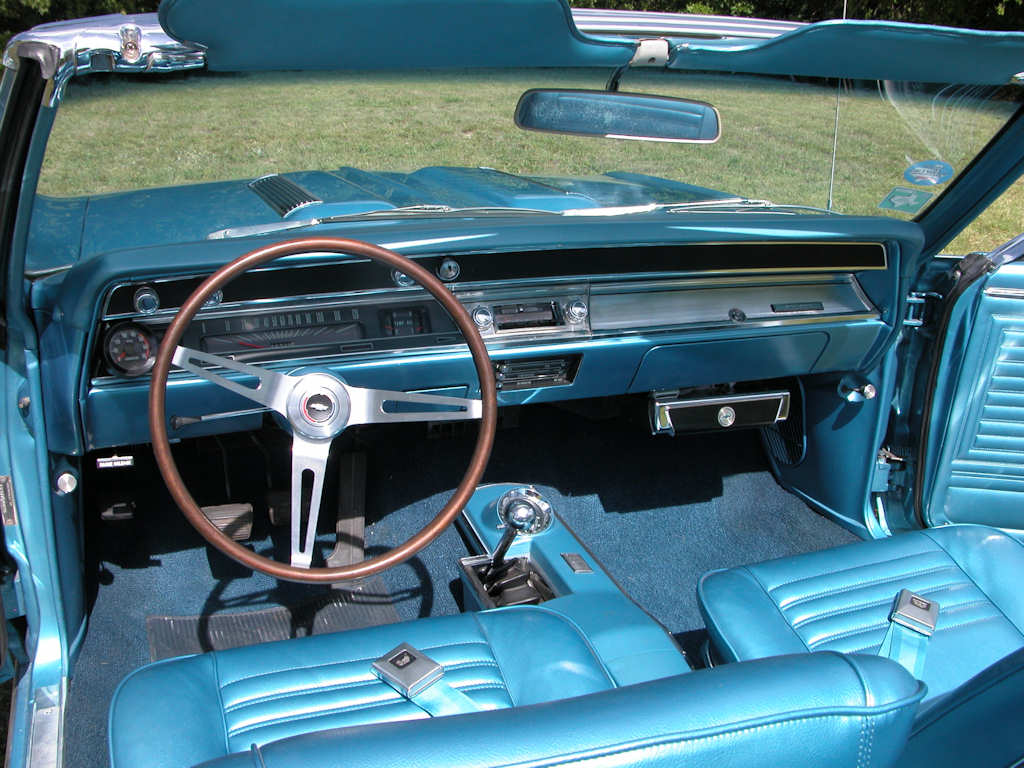
A wood grained plastic steering wheel available on any 1967 Chevelle under
RPO N34 and 5,462 were checked off the order form.
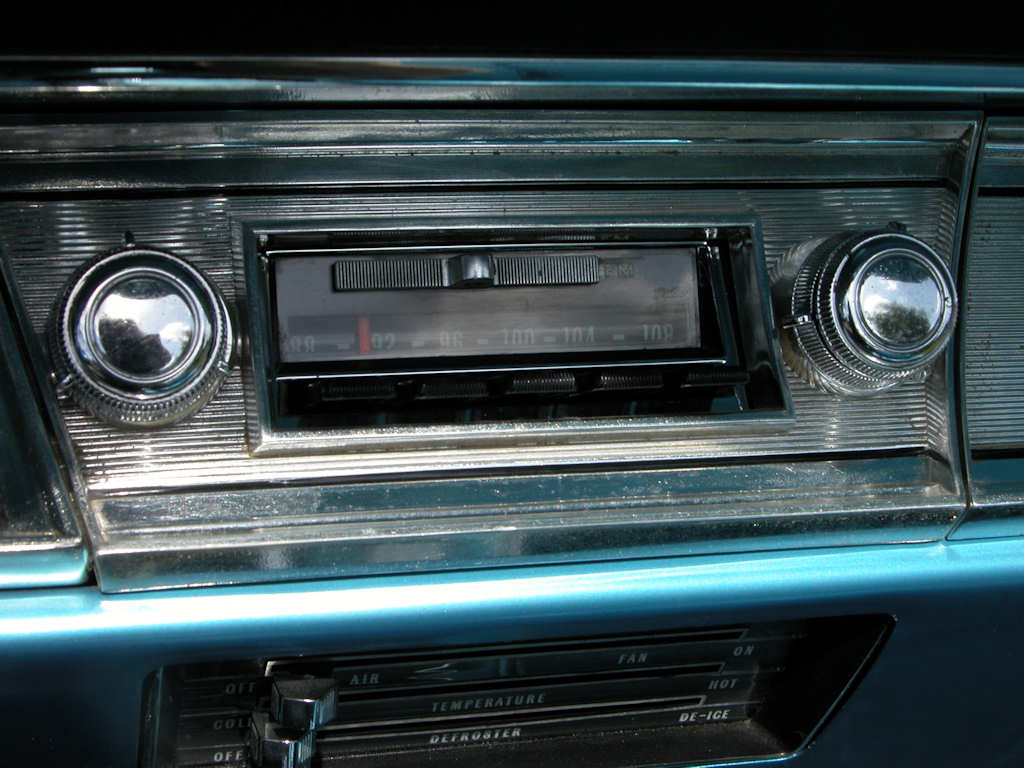
The radio faceplate was
ribbed to match the ribbed bezel atop
the glove box. When no radio was ordered a radio hole cover was used
in place of the radio itself. Since any radio was optional, the term
“radio delete” is a misnomer; you can’t delete what you don’t order.

